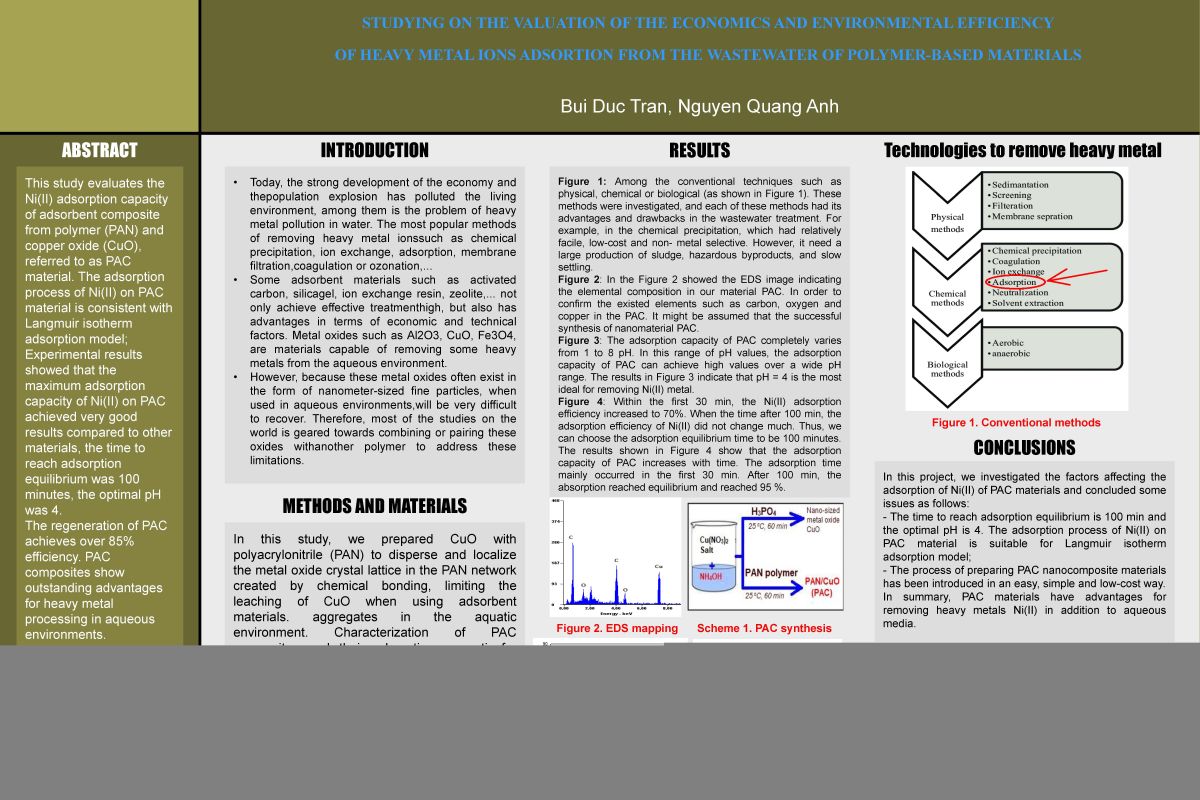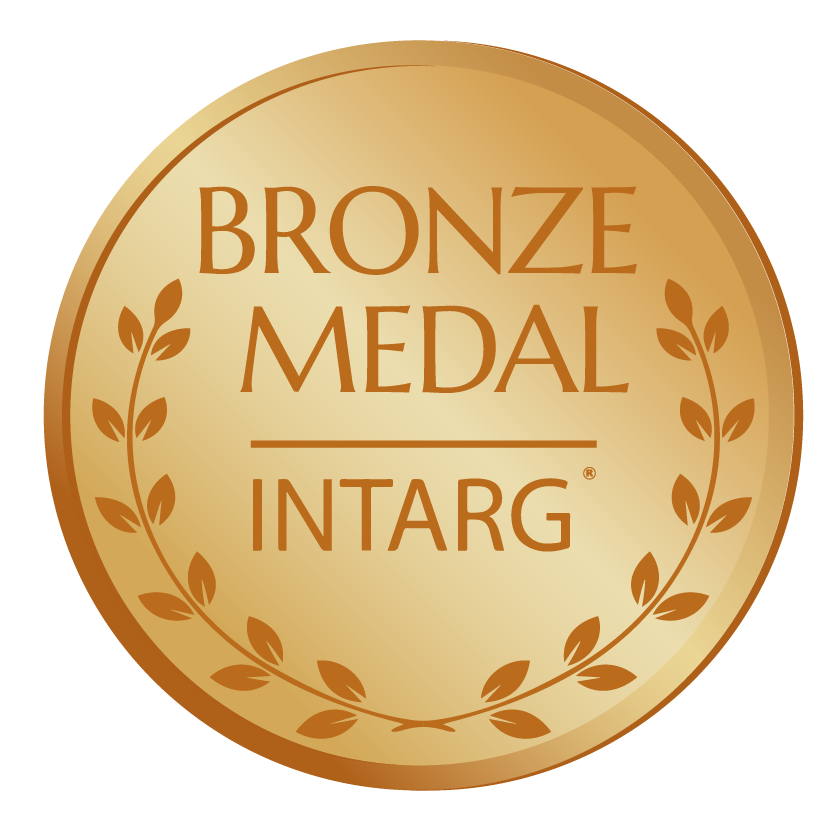Lista wynalazków
Prezentacja wynalazku
ZoP STUDYING ON THE VALUATION OF THE ECONOMICS AND ENVIRONMENTAL EFFICIENCY OF HEAVY METAL IONS ADSORTION FROM THE WASTEWATER OF POLYMER-BASED MATERIALS.
autorzy: 1. NGUYEN QUANG ANH, Class 11A2, High School of Education Sciences, University of Education Vietnam National University
Today, the strong development of the economy and thepopulation explosion has polluted the living environment, among them is the problem of heavy metal pollution in water. The most popular methods of removing heavy metal ionssuch as chemical precipitation, ion exchange, adsorption, membrane filtration,coagulation or ozonation,... Some adsorbent materials such as activated carbon, silicagel, ion exchange resin, zeolite,... not only achieve effective treatmenthigh, but also has advantages in terms of economic and technical factors. Metal oxides such as Al2O3, CuO, Fe3O4, are materials capable of removing some heavy metals from the aqueous environment. However, because these metal oxides often exist in the form of nanometer-sized fine particles, when used in aqueous environments,will be very difficult to recover. Therefore, most of the studies on the world is geared towards combining or pairing these oxides withanother polymer to address these limitations. We prepared CuO with polyacrylonitrile (PAN) to disperse and localize the metal oxide crystal lattice in the PAN network created by chemical bonding, limiting the leaching of CuO when using adsorbent materials. aggregates in the aquatic environment. Characterization of PAC (PAN/CuO) composites and their adsorption propertiesfor Zn(II) in the aquatic environment was investigated. To evaluate the feasibility of the product, this study has studied and evaluated a heavy metal adsorption in water areas with heavy metal pollution. The results show that, the metal adsorption capacity is equivalent to some products which being used in the market. In this paper, we use PAC composites to adsorb Ni2+ nickel ions and evaluate the process of teaching environmental education for High school students. In this project, we investigated the factors affecting the adsorption of Ni(II) of PAC materials and concluded some issues as follows: The time to reach adsorption equilibrium is 100 min and the optimal pH is 4. The adsorption process of Ni(II) on PAC material is suitable for Langmuir isotherm adsorption model; The process of preparing PAC nanocomposite materials has been introduced in an easy, simple, low-cost way and can be used to handle the real environment. In summary, PAC materials have advantages for removing heavy metals in addition to aqueous media. Through the project, the students can know that the development of advanced technologies, nanomaterals, green and environmentally friendly materials and technologies using renewable energy. This is very necessary to contribute to the conservation of the environment about the earth, sustainable environmental development.

Giełda wynalazków
Medal

Brązowy Medal
Ochrona własności intelektualnej
Brak danych
poziom gotowości technologicznej
Brak danych







